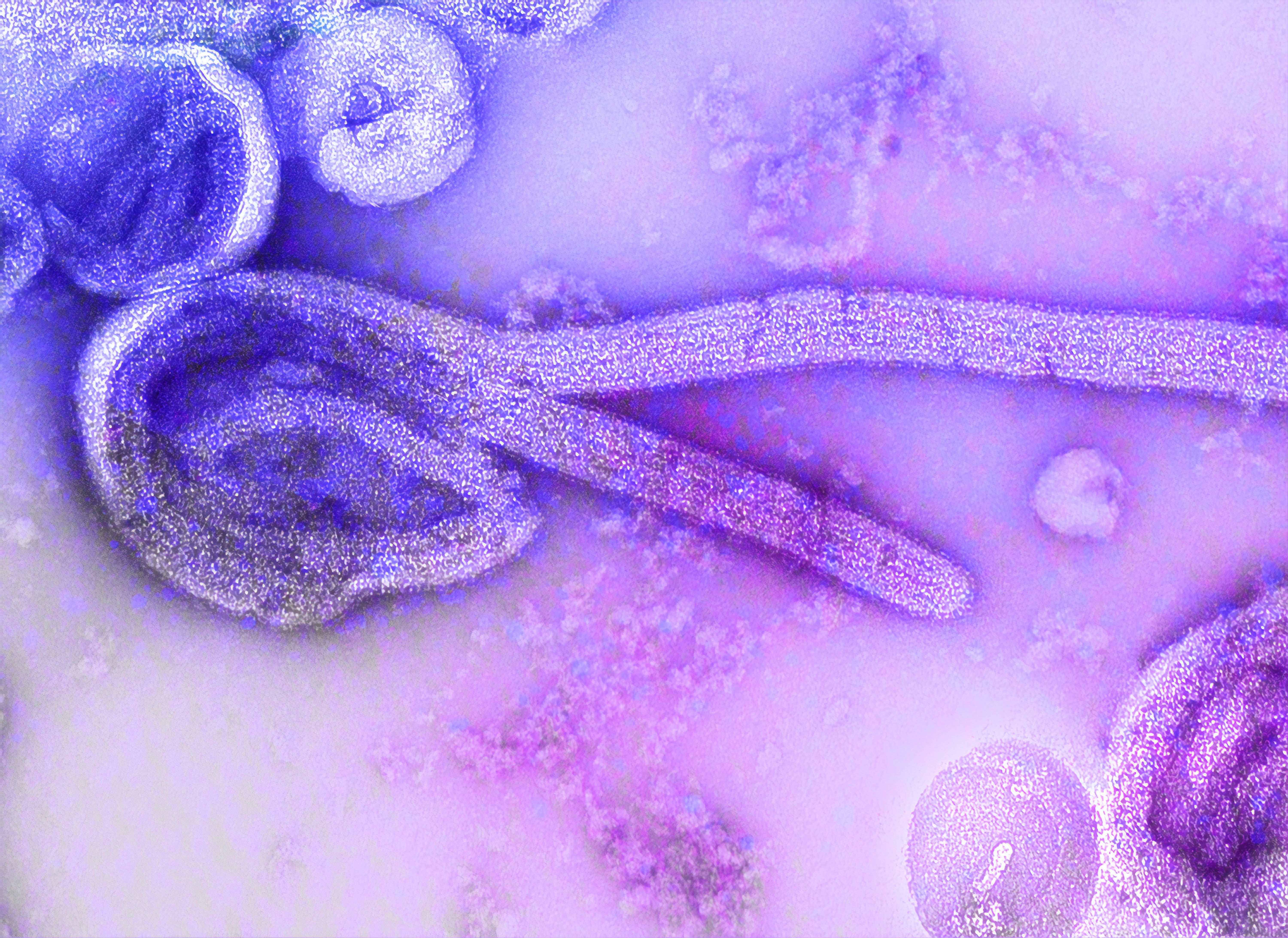There are several deadly viruses in the ebola virus family, but current antibody treatments are effective against only one. Our work discovered two antibodies from human survivors, and their benefit when combined together in a cocktail, to provide broader protection at a lower dose. We reveal surprising findings of how they act to achieve protection.
Views 1361
Reading time 3 min
published on May 15, 2023
Several viruses in the ebolavirus family cause lethal diseases in humans, including Ebola virus, Sudan virus and Bundibugyo virus. Currently approved antibodies and vaccines are effective against only the Ebola virus and not the others. Treatments that broadly cover different deadly viruses are urgently needed. Our interdisciplinary team obtained promising results and found that two monoclonal antibodies from human survivors provide broader neutralization in a cell model, and when combined as a cocktail, can protect non-human primates from Ebola and Sudan virus disease, even reversing advanced signs. Our cryo-electron microscopy (cryo-EM) studies illuminate the mechanisms of recognition and protection. We see from the structure that one of the antibodies bridges neighboring subunits and anchors to machinery that would otherwise drive the fusion of virus and host membrane. The other binds in a unique format to the apex of the surface glycoprotein, with a single antibody simultaneously blocking all three receptor-binding domains.
Ebolaviruses express a single protein on their surfaces, the glycoprotein GP. GP mediates attachment to and entry into target host cells by binding to the cellular receptor and undergoing an irreversible conformational (structural) change that drives the fusion of viral and host membranes. GP is the target of most therapeutic antibodies. Yet, a complication for antibody development is that the glycoprotein gene also expresses a different protein, the soluble glycoprotein sGP. sGP is produced and secreted abundantly from infected cells and may serve as a decoy. Many antibodies cross-react between GP and sGP, but only binding to GP induces neutralization. Binding to the more abundant sGP does not neutralize the virus. Antibodies specific to viral surface GP and that do not cross-react to sGP may be more effective as therapeutics.
Our collaborators isolated and characterized antibodies from survivors of the West African Ebola virus outbreak over time. Among the neutralizing antibodies identified, two, termed 1C3 and 1C11, stood out for their potency, broad neutralization, and protection in rodent models. Further, 1C3 and 1C11 bound to distinct epitopes on the surface glycoprotein GP and did not bind the abundantly secreted sGP protein.
To understand the mechanisms of antibody function, we used cryo-EM to understand how 1C3 and 1C11 anchor to and neutralize Ebola virus GP. The structure revealed that three copies of 1C11 anchor to the side of GP, to a site that includes the fusion machinery of one monomer and the adjacent surface of the neighboring GP monomer. This region is highly conserved among different ebolaviruses. Hence, we noted the potential for antibodies like 1C11 that target this region to be broadly cross-neutralizing.
We found that the complementary antibody, 1C3, binds to the center apex of the GP trimer with one 1C3 fragment binding simultaneously to all three copies of GP in the trimer. We realized this antibody type is rare, and our cryo-EM reconstruction is the first to reveal this asymmetric mechanism of binding to the Ebola virus. One 1C3 fragment could block all three possible binding sites of the receptor. It is encouraging to discover a potent and unique antibody that blocks the essential receptor binding process.
Next, our colleagues tested the efficacy of the two-antibody cocktail in different animal models. We started with the mouse model as a screening step to verify that both antibodies are protective in vivo. Then, we used a more stringent model, guinea pigs, to validate the cocktail protects against lethal viral infection. Lastly, we tested the cocktail in non-human primate models. We observed that the 1C3-1C11 cocktail fully protected primates against both Sudan and Ebola virus diseases. More encouragingly, the dosage we used for Ebola virus treatment, at 25 mg/kg (12.5 mg/kg for each antibody), is the lowest reported to achieve complete protection among studies to date. The reversal of advanced disease and high viral load after treatment suggest that further dose reduction or later treatment delivery could be effective. We knew both would be important features of a therapeutic for human use, when a therapy must often be delivered days after viral exposure.
In summary, in our study, two potent antibodies isolated from Ebola survivors, 1C3 and 1C11, form a broadly-reactive antibody cocktail. The structural analysis by cryo-EM revealed the asymmetrical recognition of 1C3 and, for 1C11, its recognition of a highly conserved fusion loop. Our results show that the antibody cocktail protects against both Ebola virus and Sudan virus diseases, and provide the basis for a broad-reactive treatment option at a potentially lower dosage for future clinical development.
Original Article:
Milligan, J. C., Davis, C. W., Yu, X., Ilinykh, P. A., Huang, K., Halfmann, P. J., Cross, R. W., Borisevich, V., Agans, K. N., Geisbert, J. B., Chennareddy, C., Goff, A. J., Piper, A. E., Hui, S., Shaffer, K. C. L., Buck, T., Heinrich, M. L., Branco, L. M., Crozier, I., … Saphire, E. O. (2022). Asymmetric and non-stoichiometric glycoprotein recognition by two distinct antibodies results in broad protection against ebolaviruses. Cell, 185(6), 995-1007.e18. https://doi.org/10.1016/j.cell.2022.02.023
 Health & Physiology
Health & Physiology



